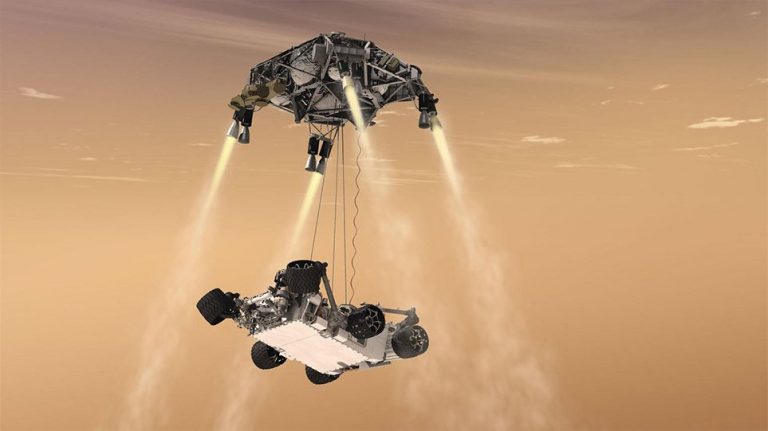In a couple of hours, NASA’s “Mars 2020 Perseverance rover” will pierce through the Red Planet’s thin atmosphere at more than 12,000 mph and — hopefully — land safely in a giant crater after a seven-month journey through the solar system.
It will explore the dusty and seemingly barren terrain for at least two Earth years in an ambitious search for signs of ancient life.
Another major goal for Perseverance: collect rock and soil samples that will be returned to Earth on a future mission, as well as turning atmospheric carbon dioxide into oxygen — an experiment that could aid future human missions to the Red Planet — collecting data on Mars’ climate and geology, and launching a solar-powered helicopter named Ingenuity that will perform the first-ever controlled flight on another planet.
The car-sized rover is the largest and heaviest robotic Mars rover NASA has ever built, weighing in at 2,260 pounds, or more than a ton (on Earth). It’s also carrying 19 cameras, the most a rover has been decorated with for any interplanetary mission.
“If there’s one thing we know, it’s that landing on Mars is never easy,” NASA Associate Administrator for Communications Marc Etkind said in a news release.
This will be NASA’s ninth successful mission to Mars if the rover lands as planned, however “only about 50% of Martian landing attempts by any space agency have been successful,” NASA says.
Thursday’s landing echoes that of the Curiosity rover on Mars in 2012, with engineers calling the attempt “seven minutes of terror.” That’s because the landing zone in the Jezero Crater is the smallest NASA has ever aimed for — not to mention the rover will operate on its own using only pre-programmed commands, the Wall Street Journal reported.
Blame the nearly 130 million-mile distance between Earth and Mars; real-time commands from NASA take about 11 minutes to reach the Red Planet.
“But as NASA’s fifth Mars rover, Perseverance has an extraordinary engineering pedigree and mission team. We are excited to invite the entire world to share this exciting event with us!” Etkind said.
The rover is expected to touchdown at approximately 3:55 p.m. ET, Feb. 18. You’ll be able to watch and hear the stellar journey through the ”eyes and ears” of Perseverance itself, along with landing commentary from NASA’s Jet Propulsion Laboratory in Southern California, which is set to begin at 2:15 p.m. ET.
You can watch the event on the NASA TV Public Channel, the agency’s website, as well as NASA’s App, YouTube, Twitter, Facebook, LinkedIn, Twitch, Daily Motion and THETA.TV.
And for the first time, this planetary landing will be available in Spanish beginning at 2:30 p.m. ET, offering the public an overview of the mission to Mars and a discussion on the role Hispanic NASA professionals had in its success, the agency said. You can watch that here.
Perseverance was launched July 30 from Cape Canaveral, Florida.
Source: yahoo
Ask me anything
Explore related questions





